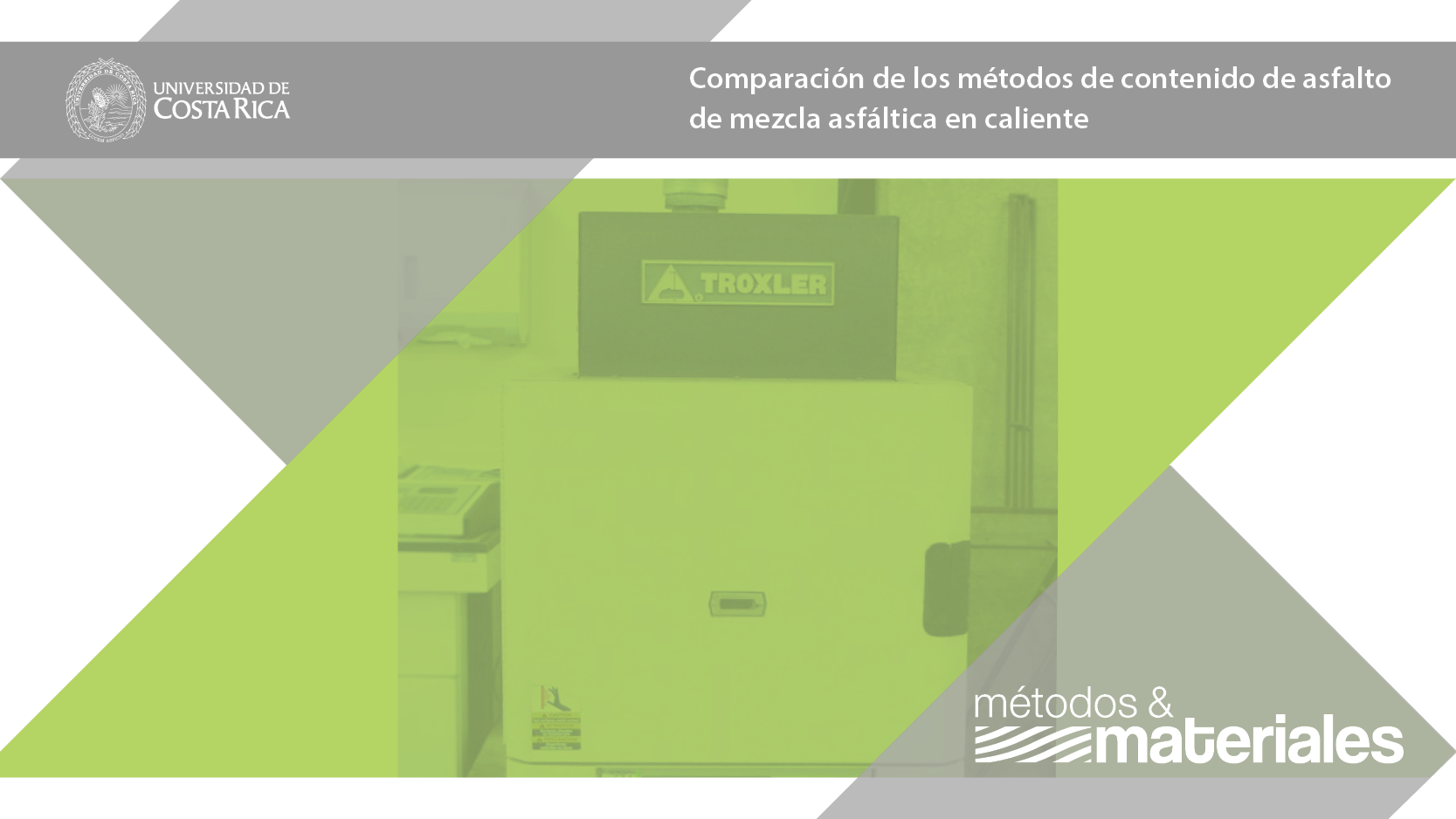Abstract
The composition of the hot asphalt mixture used for pavements is defined according to a design that try to meet the performance according the project in which it is to be used. Since asphalt is the binding material that provides cohesion and adhesion to the mixture, it is important to be able to quantify if the mixture produced contains the amount of asphalt established in the mix design, for that different tests have been developed to determine the content of asphalt. Although the purpose of the test methods is the same, there are doubts about the accuracy of some of them, and especially about the correlation between test procedures. This study aims to provide real results of an asphalt mix produced in a production plant, which is analyzed using the different methods and equipment to compare them with the production data and thus determine the precision and accuracy of each procedure.
The results show that the methods of incineration by resistance furnace, incineration in the infrared furnace and the solvent extraction method using centrifuge do not present significant statistical differences, which is not the case with the solvent extraction method using a reflux system. The latter, despite being the one with the lowest variability, is also the most distant from the design asphalt content. However, the four methods studied are within the tolerance allowed by national regulations with respect to the asphalt content established in the blend design.
In addition, as some laboratories use the gasoline extraction method as solvent instead of ACS grade trichlorethylene, the extraction test is performed using both solvents to determine whether the result with the alternative solvent is reliable. The results obtained discard it as solvent, as it does not produce statistically comparable results with the method when using trichlorethylene.
References
Abdo, A. M., & Jung2, S. J. (2016). Effects of Asphalt Mix Design Properties on Pavement Performance: A Mechanistic Approach. Advances in Civil Engineering , 2016, 7.
ASTM. (2010). Standard method for asphalt content of hot mix asphalt by ignition methods. ASTM 6307. Pensilvania: ASTM International.
ASTM. (2011). Standard test methods for quantitative extraction of bitumen from bituminous paving mixtures. ASTM D 2172. Pensilvania: ASTM International.
Barrantes-Jiménez, R., Sanabria-Sandino, J., & Loria-Salazar, L. (2015). Informe de evaluación de la red vial nacional pavimentada Año 2014-2015. Informe de evaluación bianual. San José : Universidad de Costa Rica.
Black, K. (1994). Materials Notebook. Retrieved Octubre 26, 2017, from Chapter 4 VI - The Nuclear Asphalt Content Gauge for Measuring Asphalt Content in Mixes: https://www.fhwa.dot.gov/pavement/materials/matnote46.cfm
Brown, E. R., Murphy, N. E., Yu, L., & Mager, S. (1995). Historical development of asphalt content determination by the ignition method. Reporte 95-02. Auburn University, NCAT.
Brown, E., & Mager, S. (1995). Asphalt Content by Ignition Round
Robin Study.Report No. 95-3. Auburn University, NCAT.
Castro, P. (2003). Evaluación estadística de métodos para determinar el contenido de asfalto y la granulometría de mezclas asfálticas. Infraestructura Vial , 5 (3), 19-25.
Cervantes-Calvo, V., Fonseca-Chaves, F., Sequeira-Rojas, W., & Loría-Salazar, L. G. (2014). Evaluación de la mezcla asfáltica producida en Costa Rica para los proyectos viales de conservación vial, Contratación Directa No. 2009LN.-000003-CV. varias zonas. San Pedro: LanammeUCR.
Hurley, G. C., & Prowell, B. D. (2003). Evaluation of infrared ignition furnace for determination of asphalt content. Transportation Research Board. Washington.
MOPT. (2010). Manual de Especificaciones Generales para la Construcción de Carreteras, Caminos y Puentes . San José.
NCAT. (1995). Asphalt content test offers improvement over solvents. TR News (180), Pp 40-41.
Patel, M. (1974). Rapid and convenient laboratory method for extraction and subsequent spectrophotometric determination bitumen content of bituminous sand. Analytical Chemistry , 46 (N° 6), Pp 794-795.
Reyes, R., MacKean, C., & Aschenbrener, T. (1996). Determining the asphalt cement content of bitumes mixtures using NCAT asphalt content oven. Colorado Department of Transportation.
Vorobjovas, V., Vaitkus, A., Laurinavicius, A., & Cygas, D. (2007). Evaluation of asphalt composition laboratory determination methods. Modern Building Materials, Structures and Techniques, (p. 7). Vilnius, Lithuania.






